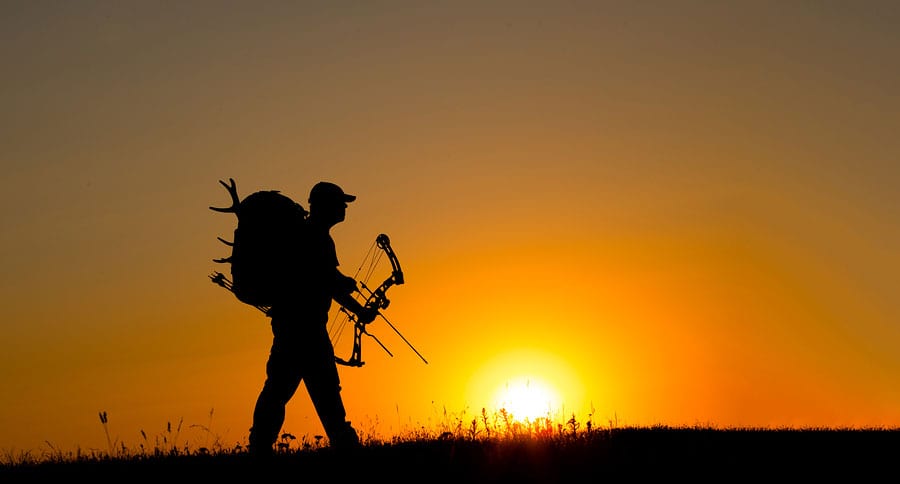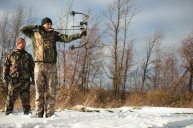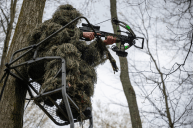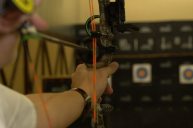Starting from a bare bow can be the best way to get exactly what you want out of your bowhunting setup.
People look at bare bows and have no idea where to start or what to look for. It can also get especially frustrating when there's a salesperson across the counter who's pushing a company's products.
When I was little, I stared with a bare Parker youth bow and began my career attaching the newest accessories to it. I've since found a compound bow (Mathews Halon 6) and a handful of accessories I trust above the rest.
Before considering what you want for your bow setup, though, it's worth noting everything comes down to personal preference.
I chose these products because they made me the most comfortable and confident at full draw when all that matters is an ethical shot. I recommend testing everything yourself at the range before taking it home.
Bow
First, obviously, you need a bare bow. This is by far the most important, but debated part of this whole process.
Overall weight, draw weight, draw length, brace height, let-off and total length of the bow are my favorite aspects to look into. Depending on what style of hunting you plan to do, you'll find a larger or smaller bow will be more ideal.
For example, mountain hunters prefer bows that carry energy longer distances for shots reaching out to 100 yards, but whitetail hunters prefer smaller quieter bows to provide more maneuverability in the stand.
Pick the bow that feels the most comfortable for you. If not, you could find yourself hiking to a stand or up a mountain with a bow you aren't happy with, and this just sounds like torture.
The Matthews Triax is my personal favorite bow on the market currently. It provides the perfect combination of speed, stability, and compact design to take on any environment, from the ground or a treestand.
Plenty of hunters have debated the bow's ability to take on the mountain terrain and distance, but I think these opinions generally come down to brand bias. Again, I felt this bow fit my comfort level the best in the whitetail woods, and left me feeling confident to take a mature buck.
https://www.instagram.com/p/Bn6ln9tgHpJ/?taken-by=mathewsinc
My second choice is the Hoyt RX-1. Hoyt pulled out all the stops to get this one right.
The RX-1 provides unmatched speed and durability for the harshest environments. You could probably drop this bow down the mountain, pick it back up and take down that massive bull. I'll go out on a limb to say if you hunt the mountains at all, this would be my top pick.
https://www.instagram.com/p/BnwXhtKB4pS/?taken-by=hoytbowhunting
Release
Your release is the most important point of the build that pays to emphasize comfort and reliability. You could be wearing or hanging this piece from your wrist for hours.
You're going to have to decide between a wrist strap and a thumb (pressure) release. I found my release by just spending a few hours in a bow shop trying out my options. You should take into account your preference for making sure the string is secure upon full draw. If you were to have a malfunction in the release, you can cause serious injury to others and your bow.
My personal release is the Scott Archery Mongoose 2. I prefer the wrist strap concept because I feel confident the release won't allow me to slip and dry fire my bow. This is personally my top recommendation for archers who are just starting because releases can become very technical and sensitive to the way they're positioned.
https://www.instagram.com/p/BoE14uNB68Q/?taken-by=scottarcheryofficial
If you feel like you're ready for a thumb release, you're probably more interested in target shooting. These competitors have the top of the line releases that'll provide you the most consistent accuracy on the market. Below I've featured John Dudley's (@nockontv) line of releases, which will provide you the top-grade quality you're searching for in a thumb release.
https://www.instagram.com/p/BmQulbHhrMY/?taken-by=nockontv
Sights
Another important aspect of your build is the sights you're peeping through. I recently published an article with a more in-depth look into the types and preferences behind each kind, which you can find here.
You need to find out if you prefer multi-pin sights that have permanent settings, or if you want an adjustable-yardage-dial sight.
If you're looking into making your bow top-of-the-line, then head straight to the digital sights. Some of these even feature rangefinders.
Below are a few examples I've mentioned, along with the TruGlo sight I personally use.
https://www.instagram.com/p/BnB8UwlgJO7/?taken-by=trugloinc
https://www.instagram.com/p/Bn_zue8jxCp/?taken-by=spothoggarchery
https://www.instagram.com/p/BjNokYwHovX/?taken-by=garminfishhunt
Stabilizer
This accessory isn't very necessary if you're trying to cut all your costs, but stabilizers provide you with calmer oscillations for target acquisition when you're at full draw. They help balance out the bow and keep vibration low through the firing process.
Again, these products will vary based on your bow and other accessories, but the best test would be just holding your bow in one hand as if you're about to draw and find which way it wants to roll.
Put weight with the stabilizer in the direction your bow wishes to roll to counteract the balance and keep everything straight. I prefer using a fully adjustable stabilizer such as the ones featured below, just in case I alter something on my bow to throw off the balance.
https://www.instagram.com/p/BlLuhith2Pk/?taken-by=beestinger_official
https://www.instagram.com/p/BmmEMXXglS1/?taken-by=mathewsinc
The key is making sure each part, including the bow itself, feels comfortable in your hands. This comfort will give you the ability to have enjoyable practice sessions and the confidence for when the time is right to take an animal.
You might also want to look into an arrow rest and an arrow quiver, although these won't have as much of an effect on your shot.
Please feel free to reach out to your local archery shop, Cabela's or Bass Pro Shops for any questions pertaining to hunting bows.
NEXT: BOW SIGHTS: EVERYTHING YOU NEED TO KNOW
WATCH
https://rumble.com/embed/u7gve.v3tom3/




